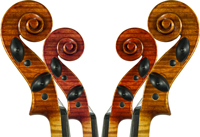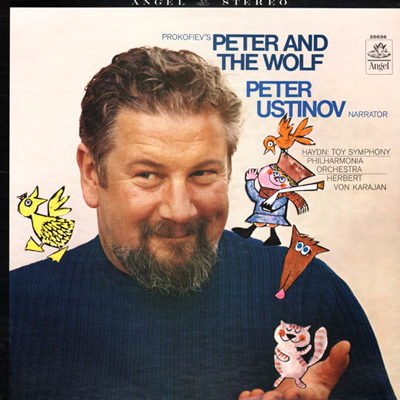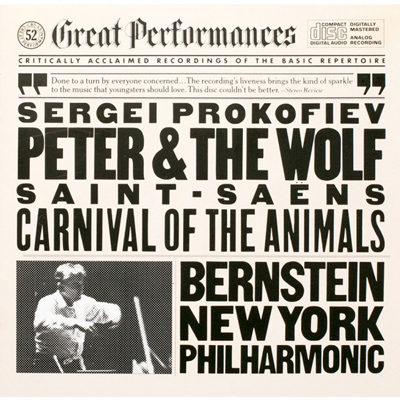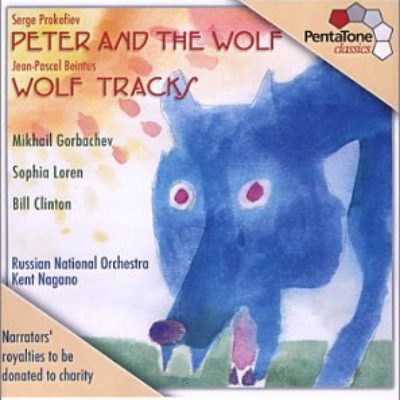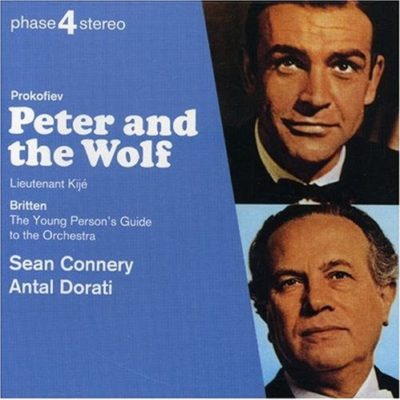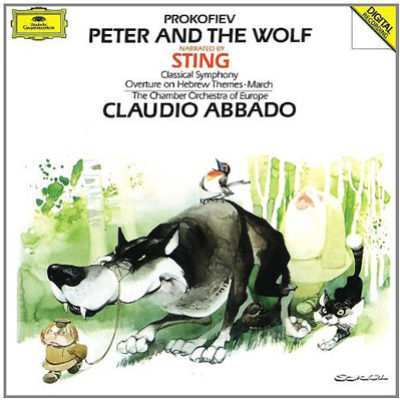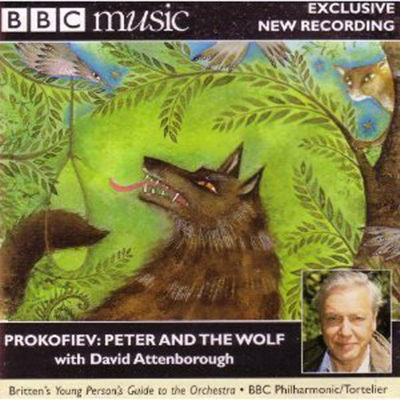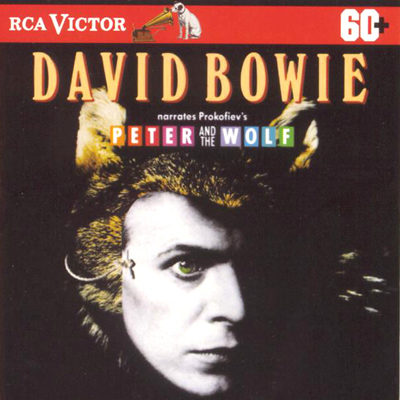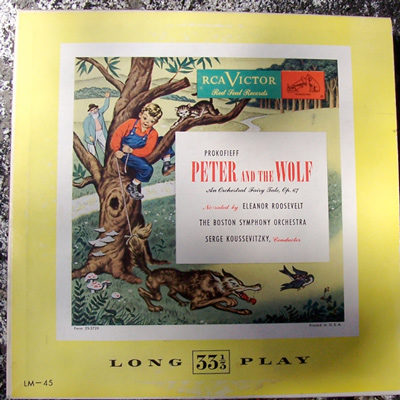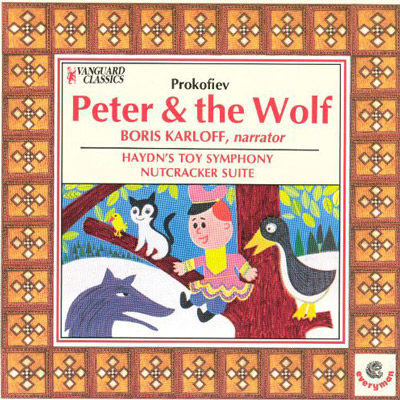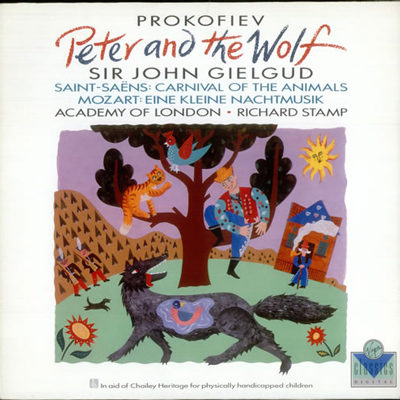George’s Blog – March 11, 2022
It is all slightly unbelievable. We are really back together at the opening concert of our new season. First of all, I want to take this occasion to thank the many of you who sent me birthday greetings last month. You helped turn the day into a grand festive event. For Erika and for me it was a happy and unforgettable prelude to the resumption of our concert series.
John Leighton summarizes the return wonderfully in his message. Despite the pandemic, despite omicron, despite the uncertainty of the regulations, White Rock Concerts has bounced back with 545 subscribers. The results are little short of miraculous. The Bergmanns have assembled a scintillating programme to lead us back to “normalcy” [whatever that may be!]
At times like this, I think back to past occasions when the music stopped. My time machine is standing by and I want to take you back 71 years to 1951. As a young man I played in one of the world’s great symphony orchestras – the Israel Philharmonic under Leonard Bernstein. The nation had just been founded and it was a time of great euphoria. It was also a time of much strife. From day one of its existence, the nation was immersed in conflict with its surrounding neighbours.
Our orchestra played mainly in the three cities of Tel Aviv, Haifa and Jerusalem, but we also visited larger farming communities. One of the oldest of these Kibbutz settlements lay on the shore of the Sea of Galilee. On the other side of the village stood the overhanging cliffs of the Golan Heights.
The orchestra played in an outdoor amphitheatre. It was early April and we were – appropriately – playing the “Spring” Symphony by Robert Schumann. Suddenly bullets rang out from the cliffs above. The firing was sporadic and random and before anyone could question whether the tympanist had struck a wrong note, a bullet slammed into the main generator and the entire amphitheatre was plunged into darkness.
Miraculously, the orchestra played on as far as memory took them. The bullets stopped flying, as suddenly as they had started. Silence and a profound darkness surrounded us all.
Conductor Milton Katims, a well-known soloist, reached down and gently took an instrument from principal violist, Odon Partos, and began playing unaccompanied Bach suites.
Illuminated only by the rising moon, he played for 19 minutes. When the lights came back on, in a single motion, he returned the borrowed instrument and gave a new downbeat. The orchestra picked up the Symphony precisely where they had left off. And, if anyone had been watching carefully, they might have seen that the snipers on the hillside, from where the gunfire had presumably come, were now listening to the music with equally rapt attention as the audience down below.
That was when I learned that bullets were not enough to drown out the music …. any more than covid succeeded in silencing White Rock Concerts.
gz
March 2022
George’s Blog – JULY 2020
We thought you might enjoy receiving a video blog from George Zukerman, our Artistic Director Emeritus. We have all enjoyed his written blogs, regularly appearing on our concert programmes. So here he now shares a message to the membership, along with a couple of stories from his career. Enjoy!
George’s Blog – April 17, 2020
Hello, White Rock Concerts friends:
Well, our concert world has certainly been thrown into turmoil! Our last two concerts for the current season have been cancelled and of course this is a reflection of what is happening around the world. With travel limited and assembly restricted, artists are unable to perform and audiences unable to attend. Never in our lifetimes have any of us ever experienced such a complete shut-down of normal musical activity. Right now, nobody can really predict when restrictions may be lifted. We can only hope that things clear up by the Fall, and that White Rock Concerts will then be ready to roll once again.
Our April concert would have taken place just this past weekend. In our earlier concerts we enjoyed Vivaldi’s Spring [from the 4 Seasons] and Beethoven’s Spring sonata. So, I wasn’t averse to an added touch of spring. Last month, Erika took the photograph at the top of this page at the George C. Reifel bird sanctuary when it was still safe to drive there. The song of the red wing blackbird literally drowned out the clamouring of a thousand ducks, each hoping to be first in line to my outstretched hand.
For some reason my thoughts went back to my early professional career when I was a member of the Israel Philharmonic Orchestra in Tel Aviv. [1951, if anyone is interested!]
My colleague Mordechai Rechtman, the Principal bassoon player of the orchestra, was not only a superb musician, he was also a celebrated chess master. At rehearsals he would often be engrossed in seven or eight simultaneous chess matches with competitors around the world. This was long before e-mail and iPads. On a spare music stand, he carefully laid out the postcards for the next moves, ready to be mailed at intermission – this one to New York, that one to London, this one to Istanbul, this to Moscow, another to Prague.
My job in the orchestra was officially that of second bassoon, a critically important position in the woodwind section. The glamorous solo bassoon passages were the realm of the principal player. But he would often be engrossed with a tricky move in one or another of his chess matches. From my first rehearsal I discovered that apart from my own entrances, I was also expected to keep a wary eye on Mordechai’s music, and to make sure that he was warned, just before each important solo. Better he played Berlioz than the risky Nimzowitsch Queen’s pawn defence. Apparently, we both did well at our respective tasks. He seldom lost a match, and never, as far as I recall, did he miss an entrance. Looking back at that remarkable musical apprenticeship, I realize that whether we were playing Mozart, Brahms or Bartok … I was forever playing Dukas’ Sorcerer’s Apprentice.
gz
April 2020
GEORGE’S BLOG – March 13, 2020
I was saddened to hear of the death of our good friend and longtime White Rock Concerts Society Membership Chair, Emerson Reid. He served on the executive for nearly 35 years and, without him, I am convinced that the Society would not have been in such splendid shape as it is today. During those times before e-mails became prevalent, I spent many evenings with Emerson and Eileen, stuffing envelopes, checking membership lists and preparing reminder notices for consecutive generations of subscribers. By the middle of his membership direction, we were finally sold out; and by that time, I believe that Emerson quite literally knew the names of all 785 members! Maybe he even knew everyone’s phone number, too! I used to laugh at his passion for detail, but the last laugh is on me. Our membership is strong because of Emerson Reid’s meticulous perseverance and unflagging dedication.
He would have been as delighted as I was to see the new brochure for the 2020-21 season. The Bergmanns have done it again, with a particularly wide variety of programme choices.
The October 30th concert, entitled The Young Beethoven is a commemoration of the 250th anniversary of the composer’s birth. I will be on stage for that event, providing a spoken blog for the evening. The ensemble will be playing some intriguing and rarely heard works, all written before Beethoven assumed that semi-permanent scowl which we see on most of his portraits. New and fascinating historical details about Beethoven and his music emerge all the time. In fact, just last month on a country drive to Cultus Lake, Erika and I discovered another example of Beethoven’s ubiquitous influence on social affairs. Imagine the impact on the musicological world, once these premises open for the season! Presumably you will have a choice of Emperor, Eroica or Pastorale topping!
In the meantime, I urge you to complete your membership renewal at tonight’s concert. The White Rock Concerts Society has been sold out now for seventeen consecutive seasons, and undoubtedly will be fully subscribed once again this coming year. The renewal process is extraordinarily simple. Please make it equally simple for the membership team by signing up tonight. The mantra remains: Join Now!
gz March 2020
GEORGE’S BLOG – February 14, 2020
Happy Valentine’s Day!
How appropriate this evening to be able to enjoy musica intima with their Songs of Love.
I am reminded of another Valentine’s Day concert in 1990….the Georgian dance company, RUSTAVI was on a major North American tour, and I had somehow been persuaded to present them at the Queen Elizabeth Theatre. The company of 65 dancers and instrumentalists would never have fitted on stage here at White Rock!
As you might imagine, it was an expensive and a risky proposition. We had to sell at least 1,000 seats to break even. Everything was going reasonably well until the blizzard of the century struck! The night before they were to play at the QET there were 48 centimetres of fresh snow. It continued well into the morning of the 14th. Vancouver ground to a standstill. Luckily, I was already in the city. I had gone to the airport to greet RUSTAVI on their arrival in Canada and I stayed with the company at their downtown hotel on that snowy night.
On concert morning, the RUSTAVI bus and truck could barely navigate the city streets to reach the stage door. Stage hands were stranded at their homes. Ian Dobbin, the theatre manager, arrived with a spare key to open the building. The artists hauled in their own equipment, and then tried out the stage and the acoustics. Looking at the empty hall, we all wondered whether any more seats would be occupied that night than were filled during the rehearsal.
I called Erika at home, and she reported that she could not even negotiate the car out of our driveway, let alone drive downtown. So much for our plan for a night out at a downtown hotel! This was going to be some Valentine’s Day celebration!
In the end, 600 brave Vancouverites made it to the performance. It was a magnificent show, but a financial disaster. It was just one more reminder to me of the inevitable risk of selling individual tickets to concerts and of the eternal soundness of the White Rock Concerts subscription plan!
***
Now, to complete last month’s blog with a few final words about Composers’ catalogues and their not-so-mysterious letters. White Rock Concerts President, John Leighton was the only one who came up with a response to my question about the letter “G”. He answered correctly that it referred to the 2006 Yves Gérard catalogue of over 1,000 works of Luigi Boccherini. I suppose I could now challenge you further about the letter “L”, but I think on this one I’ll give you the answer right away: Allessandro Longo (himself a composer as well as a distinguished music historian) created the first comprehensive catalogue of the works of Domenico Scarlatti, in 1906. Hence, the “L” numbers which often appear after each of Scarlatti’s myriad sonatas.
Surprisingly, there is no complete catalogue for Beethoven, whose 250th birthday is due for celebration this year, so no letters or sequential numbers identify his works. Instead, Beethoven is usually listed by opus number. Chronologically, this is not always reliable, since some opus numbers were attributed by publishers long after the works were first written, but scholars have accepted the general parameters of Beethoven’s output, divided into “early”, “middle” and “late” periods. Beethoven also left 230 works without opus numbers, some accidentally forgotten, some unpublished and some incomplete fragments. In 1955, German musicologists Georg Kinsky and Hans Halm created the first comprehensive catalogue of these works. Since the letters “K” and “H” were already in use elsewhere, we were saved from the editors’ initials. Instead, these scattered works are listed as WOO [Werke ohne Opuszahl – Works without opus numbers]. As an example, Für Elise, which is surely one of Beethoven’s most popular works, never received a proper opus number. Its only catalogue listing is WOO 59. Confusing? Maybe I should create a new project to keep myself busy for a decade or two. Watch for the “Z” catalogue.
gz Feb 2020
GEORGE’S BLOG – January 17, 2020
The meaning of “RV”
I am sure you have noticed, from time to time in concert programmes that some of the compositions are identified by various numbers and letters. For instance, tonight’s Vivaldi concertos are shown as RV 297, RV 315, RV 270 and RV 208. Those not-so-mysterious letters usually stand for the initials of the musical scholar or editor who has compiled a catalogue of that particular composer. The numbers are either chronological or they reflect various genres of composition.
In the case of Vivaldi, the culprit is Danish music historian Peter Ryom who spent years of assiduous research compiling the list of more than 1,350 works by the great Italian master. When it was completed in 1978, he proudly assigned the first letter of his name – “R” – to the catalogue. The “V” does not represent a name – it stands for the German word Verzeichnis, translating to “Catalogue” or “Listing”.
The numbers in Peter Ryom’s Vivaldi catalogue have been assigned by genre. Vivaldi wrote over 200 Violin concertos and Ryom gave them the numbers 170 to 391. Dozens of them are in C Major, so it is just as well that each has its own RV number.
Best known of all the great composers’ directories is the Köchel catalogue, containing all of the more than 600 listings of Mozart’s incomparable output. You’ve probably all seen those “K” numbers which are always associated with Mozart’s works. Sometimes they show up as “KV”, for Köchel Verzeichnis (Köchel Catalogue). The list was first compiled in 1834 by Ludwig Alois Friderich Ritter von Köchel (1800-1877), a botanist as well as a music lover, who applied plant taxonomy in creating his music catalogue. It is chronological, so that Mozart’s earliest work was given the number 1, while the Requiem, which was his final (and unfinished) work is number 626.
My wife, Erika has recently introduced me to a remarkable fact about the Köchel catalogue. If you want to know how old Mozart was when he wrote any one of his listed works, take the “KV” number, divide it by 25 and add 10. There is no known mathematical explanation for this phenomena – you will just have to take our word for it. Take the Requiem for example: 626/25 + 10 = 35 = Mozart’s age at the time of his untimely death. Sorry: the formula doesn’t work for Vivaldi!
There are many others to watch for. Bach is identified with “BWV” numbers (Bach Werke Verzeichnis). There are “D” numbers for Schubert and “Hoboken” numbers for Haydn. Beethoven doesn’t have a catalogue, but I’ll tell you a little more about that in next month’s blog. For now, I’ll leave you with a conundrum. Which composer do you think ended up with “G” numbers on what may well be the world’s longest music catalogue?
As you can see, we have a veritable alphabet soup of composers’ catalogues. Köchel among all of them seems to have caught on the best. At least among musicians, “K” numbers are used as frequently as the names of Mozart’s works. Still, who would not prefer to identify Eine Kleine Nacht Musik by name rather than K525? Consider Bach’s Christmas Oratorio. Which expresses better the sheer joy of the occasion: the spoken title or BWV 232? Is Schubert’s 8th symphony best known as D759 or the Unfinished? Certainly two of tonight’s Vivaldi concertos will remain The Seasons, with or without their “RV” numbers. Musical nicknames, it seems, will always prevail.
gz, Jan 2020
GEORGE’S BLOG – November 1, 2019
I am not at all surprised to see the St. Lawrence String Quartet back again in White Rock. I’ve known them since the year they won the first Banff International String Quartet competition. They have always been very special in the Canadian chamber music firmament. Not only do they play in the great cities of the world – New York, Paris, Tokyo, Moscow, Rome, Barcelona, Frankfurt – but they will always find time in their schedule to include smaller Canadian venues.
Today’s blog, however, is not about the Quartet itself but, rather, about the great river after which they take their name.
Twenty-five years ago, I undertook a remarkable tour along the North Shore of the St. Lawrence. It was also with a quartet, but a very different combination: violin, clarinet, bassoon and portable keyboard.
The Côte Nord is home to some of the oldest fishing villages in Canada. There are 11 scattered settlements spread along 400 kilometres of boreal forest and wild tundra, with a total of 5,000 people of French, Acadian, Innu and English origin. We had undertaken to play for all of the schools in the region.
This posed an immediate problem. Most of the villages were not accessible by road. Only one of them had an airport. We abandoned our rental car at Havre St. Pierre and completed the tour to Blanc Sablon on the Labrador border aboard the rugged coastal steamer Nordic Express.
On board the ship we were at the mercy of the tides. Sometimes, the vessel could only stop long enough to deliver and load freight. In Tête à La-Baleine, instead of going ashore to play, we invited the entire school population of 21 aboard. We played until the ship’s horn drowned us out – a signal to the audience to hurry ashore.
None of us were particularly good sailors, and we suffered grimly from seasickness. Still, the schedule worked perfectly, and we managed to play for each of the schools along the route.
All of this occurred in February, and I constantly worried about the possibility of being stranded in the ice. For how long? Three months, perhaps? There was always the risk that we might become a veritable Franklin expedition, ice-bound in the frozen grip of the St. Lawrence.
I thought it was a good idea to take precautions in my Canada Council application, which normally provided a per diem allowance for each day away from home. Not entirely seriously, I reworked the grant application to allow for a possible 173 days of per diem. Naturally, the auditors rejected the request! However, the Director of the Council actually phoned to ask whether we wouldn’t prefer to make the journey in May when even the icebergs have disappeared from the estuary of the St. Lawrence.
gz Oct 2019
GEORGE’S BLOG – September 27, 2019
There is always exhilaration and excitement surrounding the start of a new season. It’s partly the aura of any “opening night”, partly the sense of community that blossoms each season as we cross musical pathways together, partly the anticipation of another year of dramatically contrasted music events.
This year, there is also a new factor: we have over 100 new subscribers, so today’s blog is a special greeting to our new members with a salute of welcome as you join our membership ranks.
I thought it might be interesting to recall the remarkable history of White Rock Concerts. It is not just any concert series; its launch in 1956 was an important moment in the history of audience development in Western Canada. White Rock was one of the first smaller BC communities to recognize its potential for concerts without necessarily heading for downtown Vancouver. Our series is now in its 63rd season, and I may be the only person present tonight who has attended all of the previous sixty two opening nights!
Let me take you back to 1956 when White Rock Concerts was first organized as a local Concert Association. I did not yet live out here, so I came down from Vancouver where I was still playing in the Vancouver Symphony Orchestra. There was no freeway yet built … access to White Rock from Vancouver was a slow route over the Patullo bridge and down the King George Highway.
My memory of springtime in 1956 was of an eternal downpour against which my windshield wipers could barely keep my vision clear. I drove down North Bluff Road to 152nd street. There was no traffic light, no mall, no high rises. I was instructed to find the library, and was rewarded for my discovery with a gathering of nine music enthusiasts.
It didn’t take long for the determined nine to form a committee and to announce plans for a first membership drive. The concerts would be held at Semiahmoo Elementary School on Oxford St. There would be a guarantee of a minimum of three concerts. Membership would be $6 plus 10% Provincial tax for the entire season. There could be no failure, only varying levels of success. And indeed, there was success. 182 subscribers signed up for the 1956-57 concert season.
Earliest records are unclear, but I seem to recall that our first series consisted of Mezzo-soprano Betty Allen, the duo piano team of Stecher and Horowitz (complete with their own two Steinway grands brought down the King George Highway in a converted horse trailer), plus a recital by violinist Gerald Jarvis, accompanied by none other than Vancouver’s jack of all trades, conductor and pianist John Avison. All this for $6.60!
Here we are in 2019, and things are a little different! But without that determined group of nine, none of today’s sold-out membership success could possibly ever have taken place. Their critical decision in 1956 NOT to try to sell single tickets was crucial to the success of today’s sold-out White Rock Concerts.
In that sense, nothing has changed. We are members of a non-profit Society whose sole objective is to provide White Rock and South Surrey with a steady array of the world’s finest concert artists. It was no different for the 182 subscribers in 1956. Once they had agreed to become members of the organization, they actually attended the individual concerts free of charge. It’s been that way for 63 seasons. Not a bad deal for all of us in the year 2019!
George’s Blog – April 12, 2019
It’s the end of a wonderful season, and I want to take the opportunity to wish you all a peaceful and relaxing summer.
But before that, I must urge you to renew your membership at tonight’s concert if you have not already done so. White Rock Concerts has been sold out for the past sixteen seasons. I don’t think it will be different for next year. You have until May 31st to renew. After that we open memberships to our waitlist and the general public.
It is worth remembering that when you join White Rock Concerts, you are not just buying tickets to attend concerts. You are actively involved in making the concerts possible. Without you as subscribers, the series could not exist.
This method of concert planning has worked for hundreds of years. Mozart’s father described it as early as 1776:
“Not a sou is paid at the door. And no one without a ticket is admitted, whoever he may be! My friends offer tickets a week beforehand, and they collect the money. But most of the tickets in blocks of twelve and twenty-four are given to the ladies, who sell them the more easily, as out of politeness one cannot refuse to buy them.”
This advance subscription plan has worked in Canada for many years, too. In the late 1950s, I approached a town in the BC interior. I was convinced that the community was ready for a concert society – much like White Rock Concerts today. However, when I telephoned ahead, I received a less than encouraging reply.
“Nobody around here would pay more than two bucks even if Mozart himself turned up,” I was told over a static-ridden phone connection. The call had been placed through the central exchange and to a rural party line (276, ring 4). I was about to hang up when the local operator interrupted: “Ring 3 is interested. I’ll connect you to Myrtle, who wants to talk to you.” Not everything on Myrtle’s phone line was clear, but before long I had an invitation to visit the community and meet with a committee. I didn’t discuss Mozart but, over the interference on the line, I had proposed a few lesser-known musicians who might be available.
On the road I encountered massive highway construction . The Rogers pass was being built to replace the old “big bend” highway. At Three Mile Gap there was a ten minute ferry that took six cars at a time. I counted 47 cars ahead of me. I realized that I would be badly delayed and from a pay phone I called again. The line constantly cut in and out as we spoke. As best I could, I told Ring 3 (or was it Ring 1?) about some of the stellar musicians, who were willing to give concerts in their town. They assured me that they would wait for my arrival.
Tired and dusty, I finally sat down with the group. As I spoke, I had a strange disconnected feeling. It seemed as if there was absolutely no interest in anything that I proposed. Piano, voice, violin, chorus, orchestra, chamber music – nothing seemed to register. I was completely confounded by a sea of blank faces until a lady interrupted, as gently as she could: “Mr. Zukerman,” she said, “you know that both times you called we had terrible phone connections. We now realize that you must have been talking about musicians, but we all thought you said magicians.”
Looking at it many years later, is there really so much of a difference? Music is its own form of sublime magic, and a musician is a kind of magician. A few seasons later, that community successfully organized their own Concert Society. In common with all such groups, membership was open to anyone at any time, but single tickets were not available to the individual concerts.
On the last day of the membership drive, a young lady came into the headquarters where I was busy with the committee signing up new subscribers. She was in tears. “I want to join,” she lamented, “but they won’t let me.” I reassured her: “Everyone can join. You can become a member at any time. What made you think you couldn’t join?” I consoled. Between tears the young lady explained. “Your poster says ‘no single admissions’. I’m not getting married until December.”
There is a happy ending. The young lady joined. Five years later as chairperson of the Society she proudly told her unmarried friends that there were definitely no single admissions.
GZ April 12, 2019
George’s Blog – March 22, 2019
I must start out tonight’s blog with a profound “thank you” to the entire White Rock Concerts audience for that incredible version of “Happy Birthday” – sung so meaningfully along with the full throated Vancouver Cantata Singers …. what an honour! You really did take me by surprise.
And then the second wonderful surprise of the evening was the extraordinary performance by the Cantata Singers. Well, not only was their performance extraordinary, but equally memorable was the wonderful reception which you gave to them! Joe Whitman, Secretary of White Rock Concerts, nailed it beautifully when he described the evening as “Magical, mesmerizing and magnificent.” I added … and “masterfully musical.” My impression was that their conductor, Paula Kremer, played her choir like a precious instrument.
Tonight is an opportunity to meet a pair of colleagues who I have not seen for many years. Tim Steeves played for me many years ago on one of my frequent tours of the Maritimes. After concerts in St. John’s and on the Avalon Peninsula, I headed up to Goose Bay with members of the Newfoundland Symphony to play for schools at several of the isolated air-access-only out-ports of coastal Labrador. We were a crazy ensemble of violin, accordion, clarinet and bassoon and our programmes included Mozart, Vivaldi and Strauss, as well as the theme songs from The Pink Panther and The Simpsons. Some of the schools had as few as seven students. The picture is from the unincorporated village of Mud Lake.
Labrador tours are inevitably at the mercy of the weather, and this trip was no exception. Fog blanketed Goose Bay as we finally took-off, three hours later than planned. “Where are we going?” I shouted to the pilot over the din of the aircraft’s twin motors. “I don’t know yet,” he yelled back, “We’ll just have to find out what’s open.” At 3,500 feet the sun was shining and the town of Goose Bay lay under a thick blanket of snowy alto cumulus. Our pilot turned his craft due East (more or less towards Greenland) and was on the radio to nearby airports. After a few moments he raised his thumbs in a sign of victory. “Black Tickle is open, let’s start there!” At least we would be able to rescue one of the three concerts scheduled for that day.
The tiny village of Black Tickle (population of 220) is about as far out in the Atlantic Ocean as one can possibly travel and still remain in Canada. Located on the Island of Ponds, off the coast of mainland Labrador, the community is subjected to fierce Atlantic storms, as well as endless banks of fog from the nearby Grand Banks. The village is nearer to Qaanaq, Greenland, than it is to Ottawa. According to Google Maps it takes approximately 2 days and fifteen hours to reach either. As the crow flies (and as we flew that day) from Goose Bay it was only 270 km.
We landed beneath an ominously low ceiling. A school bus drew alongside the plane as the motors were stilled. In twenty minutes we were in the school, set up and ready to play. All twenty two students were there that day, and a sizeable number of the town’s adult population joined us.
As we played, our pilot stood at the back of the room. Every few moments he disappeared to the Principal’s office to check the weather conditions. But in fact, he didn’t need the telephone. He could see the front moving in. We were in the middle of an arrangement of “La Donna e mobile” from the opera Rigoletto, when he started waving his arms furiously, gesturing first to the door, then to his watch, then helplessly at the approaching clouds. As we came to an early stop, he pre-empted the balance of the concert. “Sorry folks.” he called out. “If we don’t get off the ground in the next twenty minutes you’ll have house guests for a week!”
The teachers nodded sympathetically, helped us dismantle our music stands, thrust a huge bag of sandwiches into our hands, and piled us back into the school bus. Fifteen minutes later we were airborne. The fog buried Black Tickle five minutes after we left. The ocean surrounding the Island of Ponds was no longer visible. All we could see, emerging magically from the clouds, was the gleaming, translucent peak of an offshore iceberg, frozen in the very sea that created it.
As we climbed above Black Tickle, the sun shone an incredible brilliant hue above the cloud blanket. We turned toward Cartwright, a mere 70 km inland, but in minutes our pilot reported that the airport there was socked in. “We have just enough gas to make it to Rigolet.” He paused, then added “with luck they’ll have fuel there for the trip home!”
We lunched on Black Tickle sandwiches. As we were landing, we could see the school bus waiting for us. It crossed our mind that by this time, given that our pilot had contacted at least eight airports and schools, on every remote airstrip in Nunatsiavut, a school bus was likely standing by in case we turned up at that particular village for our promised concert. And so, at the Rigolet school we once again played our repertoire, this time without interruption. Our pilot, meantime, had successfully found enough aviation fuel for the return trip and, when the school bus brought us back, we all breathed a collective sigh of relief that the Rigolet airfield had remained open for our final take off for the day.
That night, back in Goose Bay, I proudly reported to the funding agencies that, despite the most daunting weather, we had successfully played two out of our three scheduled concerts. A justly proud pronouncement.
But, in the end, we had one that was even better. Who else in the world could possibly claim to have played Rigoletto in Rigolet?
George’s Blog – January 18, 2019
In November I had fun writing about basset hounds. That turned my thoughts to animals in general. Does music have charms to soothe the savage beast? English playwright, William Congreve, wrote that famous line in his 1697 play The Mourning Bride …. but with an extra letter “r”. He was concerned about the effect of music on the “savage breast”. Popular usage these days has altered the meaning. Present day references often misquote the author and refer, instead, to “the savage beast”, which is how I first learned the line. Early in my playing career I decided to test the effect of dulcet bassoon tones on any animal willing to stand still long enough to constitute an audience.
I never managed to play the bassoon for a rhinoceros, although I was close enough to one in Malawi. My concert at the University proceeded as scheduled, but the annual hang gliding competition from the Zomba plateau was precipitously cancelled because of rhinoceroses grazing on the beach. I’m not at all sure how they might have responded. Wild creatures (and even some domesticated ones) each have different reactions to modulated sound.
In Australia, I discovered that crocodiles were remarkably disinterested. At home, cows had too many other busy things to which they wished to attend. In New Zealand, sheep grazed safely, but did not show any signs of interest when I played Bach for them. Elephants on the other hand – at least those I encountered in the Knysna region of South Africa – seemed to respond with gracious approval, even nodding their trunks in rhythmic accord. It was a gratifying and salubrious moment for a Canadian bassoonist to be able to play for an African trumpeter.
At Gibraltar, I tried to play for the famously thieving Barbary Apes. They are not apes at all, but tail-less Macquarie Monkeys – the only wild monkey population on the European continent. They are impervious to tourists and notorious for grasping shiny objects such as watches, cameras, buckles on handbags and, presumably, also silver plated bassoon keys. I proceeded, cautiously, in the cable car to the top station. There I was about to assemble the bassoon and serenade a waiting simian family, when it started to rain furiously. My bassoon was certainly not waterproof, and I hastily packed it away. The monkeys scurried for shelter and I never found out how they would have reacted to the Hall of the Mountain King or even The Old Castle from Mussorgsky’s Pictures at an Exhibition.
Their distant cousins, the Cape Baboons of the Kanankop troop, were not so easily disbursed. I ran into them on South Africa’s Garden Route, which links Natal to the Cape Province. It is a spectacular highway with magnificent views as it traverses the Indian Ocean coastline of the African continent.
At the toll booth outside of East London, I stopped to pay the tariff. Even as I opened my side window to hand the coins to the attendant, a troop of baboons – resident in the forest glade behind the toll booth – hurled themselves across the road and took up positions on the pleasingly warm hood of my vehicle. Fifteen or twenty of these animals, lying in front of the windshield, made it impossible for me to see the road ahead.
I contemplated playing for them but, if they had liked the performance, they might not have wanted to leave and that would have delayed me even longer. Instead, I looked helplessly out of the driver’s window at the agent who had just collected my payment. He was obviously very familiar with this problem. In amused sign language he raised ten finger of both hands, then five fingers of his right hand. The message was wordlessly clear. I handed over 15 more rand (twice the toll cost). The attendant reached into his hut, and from there he tossed a large bunch of bananas over the heads of the animals. They immediately jumped off the hood of my car and dashed after the fruit which had fallen on the far side of the vehicle. I accelerated furiously and was quickly out of the toll gate en-route to Cape Town, sadly depriving the baboons of the opportunity to reassemble on the hood where they might have enjoyed their banana feast in the suffused warmth of my rental vehicle.
GZ, Jan 2019
Now some news about White Rock Concerts. Our new website is up and running at whiterockconcerts.com I urge you all to take a look at it, and start using the website for a host of information that you will find there.
For instance, there are biographical sketches of each of the artists who are appearing for us. But that’s just the beginning. Did you know that you could also look up the programme that each artist will be playing?
Very soon now you will find news about next season on the website. As soon as the brochure for the 18-19 season is printed, it will also be posted at whiterockconcerts.com.
You will also find a brief history of White Rock Concerts already posted on the website. That is just a beginning. In a few months’ time when our archive is fully functional, you’ll be able to find out who appeared for White Rock Concerts in any given season. Conversely, you might want to know how many times Ben Heppner [or any or tenor, for that matter] ever appeared for us. Or how many pianists we have presented since we began keeping records in 1956. Past programmes will also be available. All told, it will be an amazing source of fascinating information about your concert series – White Rock Concerts is now in its 62nd season, and we owe it to our future audiences not to lose track of this impressive history.
GZ Feb 16, 2018
Blog #11. Jan 19, 2018
For the final few weeks of 2017, I enjoyed an unexpected “vacation” at Peace Arch Hospital, recovering from a fractured hip. Many Board members and subscribers dropped by while I was there, and I want to thank them all, profoundly. I also welcomed those daily [sometimes twice daily] visits from The President. Erika, more than all others contributed to my quick and relatively easy recovery.
Nobody enjoys Hospital stays, but I must say that the medical staff, the nurses, the physio therapists and even those troglodytes down in the basement who prepared the meals [and to whom I am bequeathing a salt cellar in my last will and testament] were also extraordinarily kind and caring to me, and helped, each in his or her own ways, to sending me home as soon as possible.
The last ten days in the hospital consisted of a rehabilitation programme, where we worked intensely with some remarkably skilled occupational therapists. This little nugget of information has a curious and touching connection to White Rock Concerts.
On one afternoon, our Artistic Directors, Elizabeth and Marcel Bergmann dropped by to visit me. It was an awkward time. All thirty five patients from the fifth floor were gathered together in a small gym, where we were working out in a group therapy session with simple, repetitive exercises. I saw the Bergmanns out of the corner of my eye, but I could not navigate my way through the sea of temporary wheel chairs, and the entire session could certainly not be interrupted for just one patient.
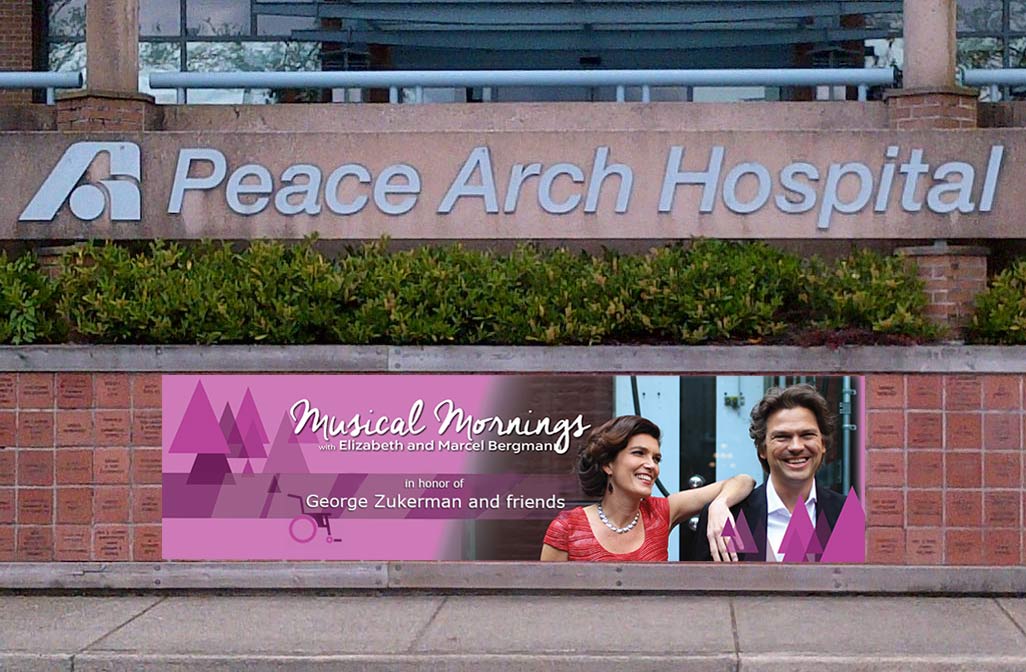
So the Bergmanns sat down at the edge of gym and waited…. Suddenly they noticed that in the corner of the room there was an electric keyboard. Marcel, ever curious, went over and turned the switch on, while Elizabeth tried an arpeggio or two, Marcel joined in and our exercises continued, picking up the rhythm of the music……Before long, the therapy session had turned into a magical two piano concert for the thirty five patients. Talk about a captive audience! On the other hand, talk about a couple of captive visitors!
What a lovely touch of Christmas joy that was, albeit ahead of the season..It was a delightful twenty minutes of Gershwin, Vivaldi, Mozart and Bergmann, and in such an unexpected venue. “Do they really do that for a living” asked one of my fellow patients “Yes, indeed”, I replied “ they are renowned international concert artists, and best of all we have them here in White Rock where they are my successors as Artistic Director of our concert series.” We toasted the unexpected event in apple juice out of Styrofoam cups, the closest that Peace Arch Hospital would permit us to a proper bubbly salute.
GZ blog for Nov 17 concert
Christmas time is always exciting in the musical world. For White Rock Concerts we take a break from concerts, but in Metropolitan Vancouver, this is the time for other great musical events!
You don’t have to look any further than our own programme, and the exciting announcements from Early Music Vancouver, the Vancouver Chamber Choir and Chor Leoni. The Early Music “Messiah” will take place right here in our own concert-hall church. It promises to be a truly authentic performance of that noble work – in the style and tradition of the century in which Handel wrote the work. Erika and I are certainly attending. We look forward to seeing many of you there.
On the White Rock Concerts front, we have exciting news, which should make us all feel very proud and powerfully connected with what was launched 61 years ago. Elizabeth and Marcel Bergmann our Artistic Directors have just signed an agreement to continue at the helm of this series for the next five seasons. This is important for continuity, for permanence, and – beyond the Semiahmoo peninsula, – for its important impact on the North American music scene.
For tonight’s concert, the John Avison Chamber Orchestra is back again under the baton of Leslie Dala. John Avison – a great Vancouver musical pioneer – started the CBC Orchestra in 1938. By the time I joined the orchestra in 1956, it was broadcasting 39 weekly concerts. In the earliest days, union regulations did not permit recording, so each broadcast was precariously “live to air”. Amazing things happened, including one occasion when half the orchestra began playing a Schubert Symphony, while the other half played the opening of Beethoven Symphony #2. On the air, John Avison clicked his baton on his podium and stated, with classic understatement, “Gentlemen, I think something is wrong. Let’s start at the top again, shall we?”
Those broadcasts were held in the old studio “G”, a former clothing store, and now the site of Vancouver’s Four Seasons hotel. Some of Canada’s history died on that sad day in 2008 when the administrators of the CBC Music decided to terminate Canada’s last remaining radio orchestra. The re-creation, in recent seasons of the John Avison Chamber Orchestra is a small effort to re-kindle some of the musical excitement of those earlier years.
I’m also looking forward to being back on stage as narrator at tonight’s event. But it isn’t going to be easy! Past narrators for Peter and the Wolf have included Peter Ustinov, Boris Karloff, Basil Rathbone, Eleanor Roosevelt, Bill Clinton and Leonard Bernstein! I’ll try my best, but I am certainly up against admirable competition!
Prokofiev’s Peter and the Wolf was written at the time of the Great Purge, and the height of Stalinist repression in 1936. Although it was created for a Moscow-based children’s theatre and conceived as a symphonic fairy tale, innocent childhood pleasure and delight had a difficult time surviving, when confronted everywhere by remorseless dialectic materialism.
Flash forward to 1978. On one of my Soviet tours in the Ukrainian city of Zaporozhe, Peter and the Wolf was on the first half of the programme. The narrator was the Educational Commissar of the famous Z coal mines. Even with my limited Russian I could tell that his narration was awkward and stilted, and at rehearsal the orchestra musicians could not stop themselves from laughing – not at Prokofiev’s charming tale -but at the embarrassing narration.
At intermission the conductor came into the musicians’ lounge and lectured the players severely, warning them to take the didactic tale of Peter far more seriously, lest the entire orchestra be in deep political trouble. As a result, at the performance that evening, the orchestra retained suitably glum expressions throughout, not daring to laugh. However, the audience was not so restrained, and they reacted just as the musicians had at rehearsal: they could not stop giggling – not at Prokofiev’s charming tale – but at ineptitude of the Educational Commissar. I never heard the final outcome, but quite probably, the entire crowd of 1500 people was reported to the administrative apparatchiks of the Zaporozhe commune.
Recalling this incident, I created my own prologue for tonight’s performance of Peter and the Wolf.
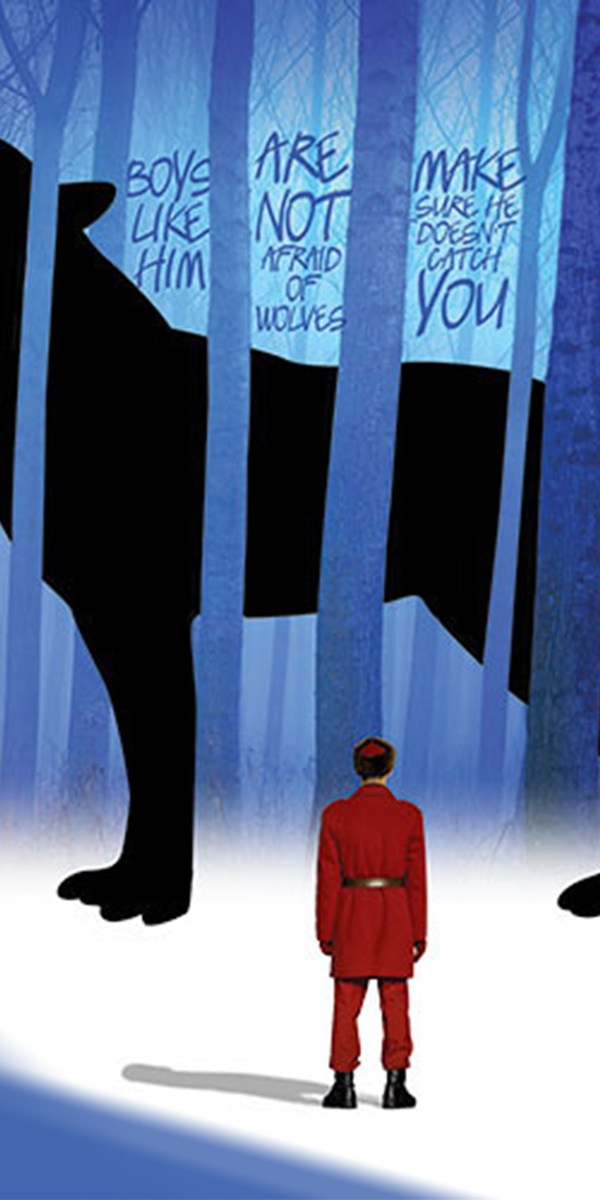
The tale of Peter, the Wolf and his friends
Is one that – we now learn – might have had other ends.
T’was published at first as a children’s delight
But it didn’t take long to set that score right.
Zhdanov and Stalin conceived of a plot
To turn a children’s account into something it’s not.
With Marxist dialectics a convenient excuse
They altered the story to serve their own use.
Our Peter’s courageous, brave communist youth,
The wolf is a capitalist, truly uncouth.
The bird is a trickster, trained to jump any hoop
The duck is a false proletariat dupe
The cat is the lackey who serves any cause
And Granddad’s a Kulak, who just obeys laws.
The hunters are Red army troops – always there
To defend Motherland both on ground and by air
The Zoo is the gulag where opponents must stay
While the victors parade for a joyous May Day.
Well, none of it happened, and childhood prevailed!
Breathe cheerful, for once again tyranny failed!
Pete’s just a kid with inquisitive thoughts
The cat chases birds regardless of sorts.
The duck swims in circles while searching for food
The bird whistles happily: depends on his mood.
“Keep that gate closed” is what Grandfather grunted
While the wolf is a species endangered and hunted.
The Soviet soldiers, were ground keepers, all
The May Day parade took place in the Fall.
And if you are seeking the ultimate truth
You really don’t need to look hard for proof.
Prokoviev’s melodies are far too sublime,
To support a false cause and be lost to our time!
